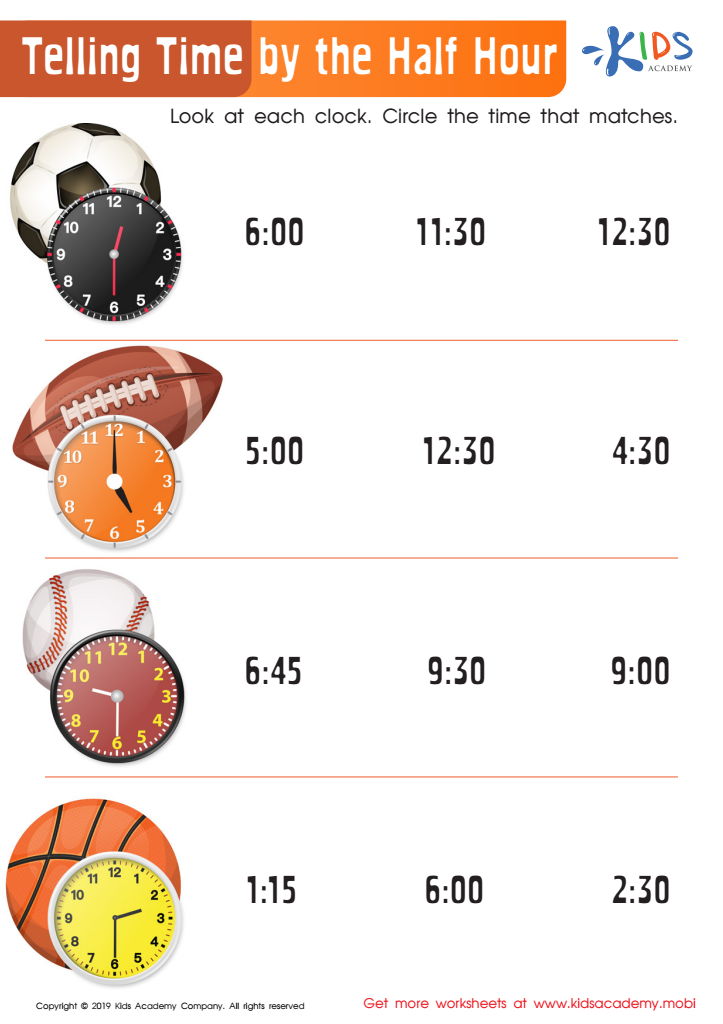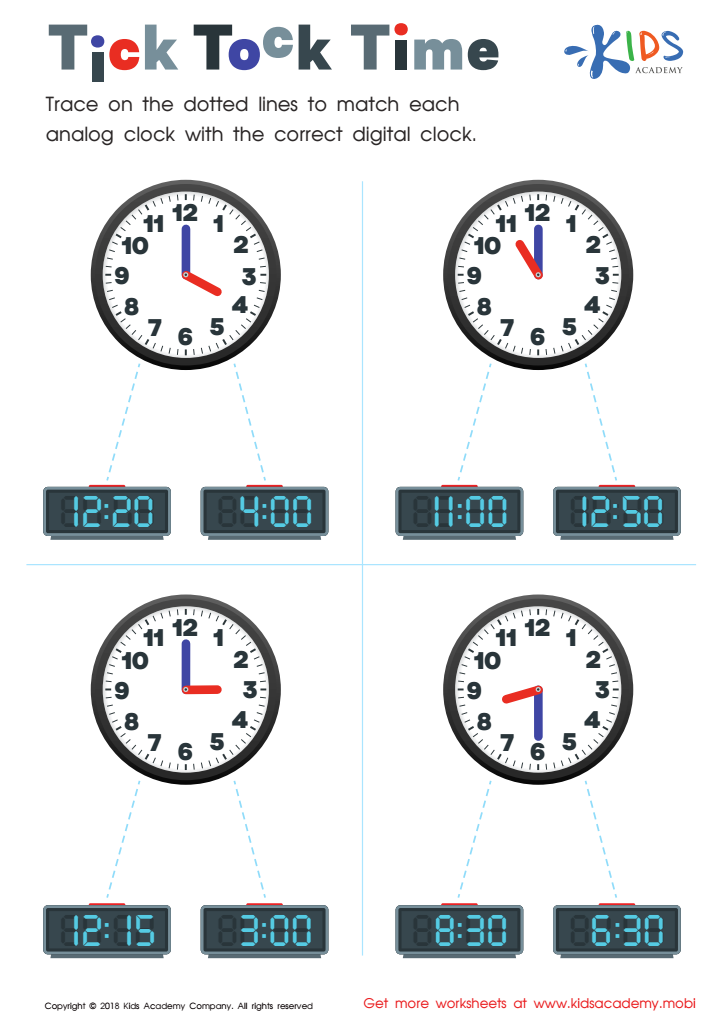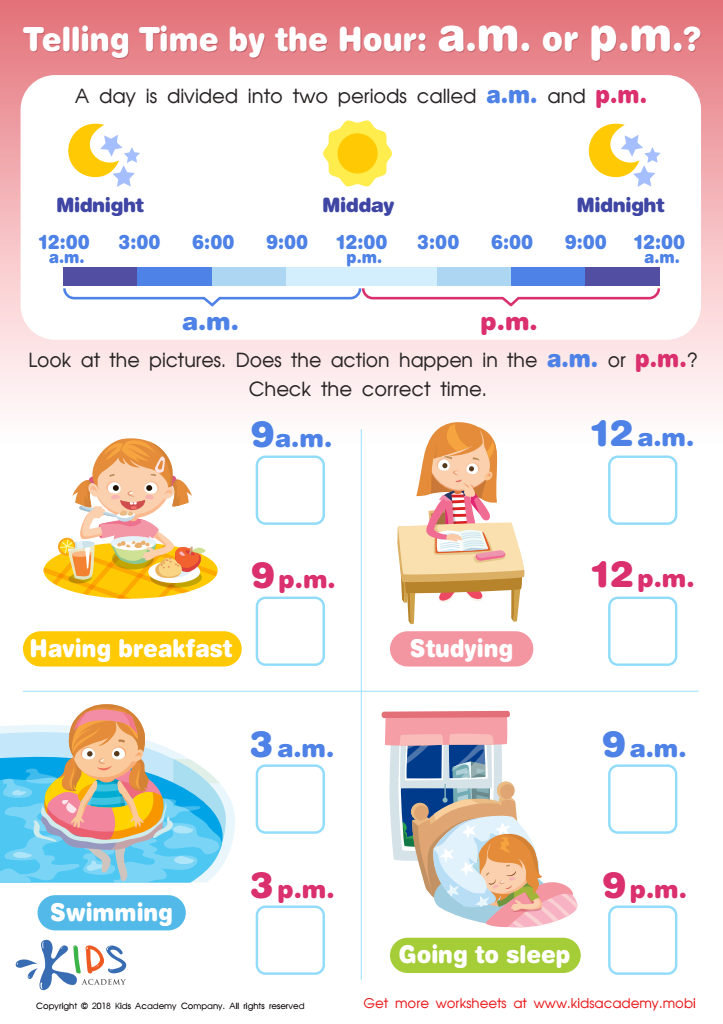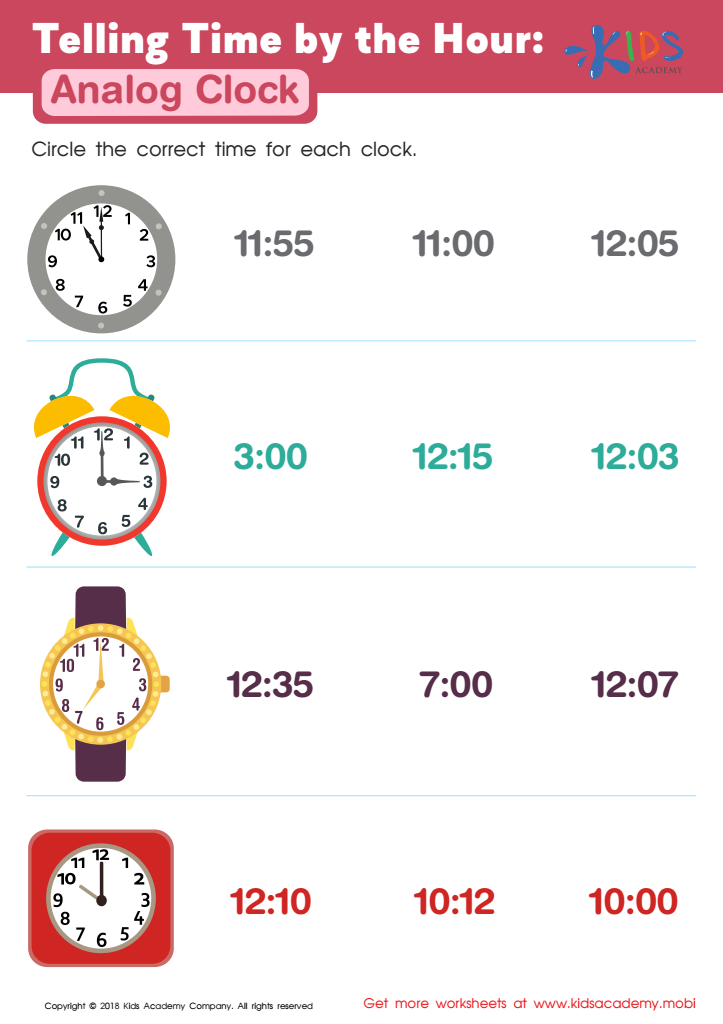Normal Time Worksheets for Ages 6-9
5 filtered results
-
From - To
Discover our Normal Time Worksheets for ages 6-9, designed to make learning how to tell time fun and engaging. Our comprehensive collection includes colorful and interactive exercises, perfect for young learners to practice reading both digital and analog clocks. Each worksheet focuses on essential time-telling skills, from recognizing hour and minute hands to understanding AM and PM concepts. These printable resources are ideal for reinforcing classroom learning or homeschooling activities, ensuring students gain confidence and proficiency in managing their daily schedules. Boost your child’s time-telling abilities today with Kids Academy’s expertly crafted worksheets!


Telling Time by the Half Hour Worksheet


Years Worksheet


Tick Tock Time Worksheet


Tilling Time by the Hour: a.m. or p.m.? Worksheet


Telling Time by the Hour: Analog Clock Worksheet
Normal time, often referred to as a consistent daily routine, is crucial for children aged 6-9 due to its significant impact on their overall development and well-being. Children in this age group are experiencing rapid growth in both their cognitive abilities and social behaviors. Establishing a regular schedule helps provide the structure and stability they need to navigate these changes effectively.
Firstly, a consistent routine enhances learning. Children feel more secure and focused when they know what to expect each day. Predictable routines help them understand the concept of time management and develop good study habits, which can lead to improved academic performance.
Secondly, a well-structured day supports emotional stability. Children who follow a consistent routine typically exhibit fewer behavior problems as they know what is expected of them. Regular bedtimes and mealtimes reduce stress and anxiety, enabling children to feel more in control and promoting better sleep patterns, which is crucial for their development.
Finally, routines strengthen family bonds. When families maintain consistent time for activities, such as meals, homework, and playtime, it fosters a sense of unity and communication. Parents and teachers who prioritize normal time help children build a strong foundation for balanced and structured lifestyles, promoting long-term success in various aspects of their lives.

 Assign to the classroom
Assign to the classroom












